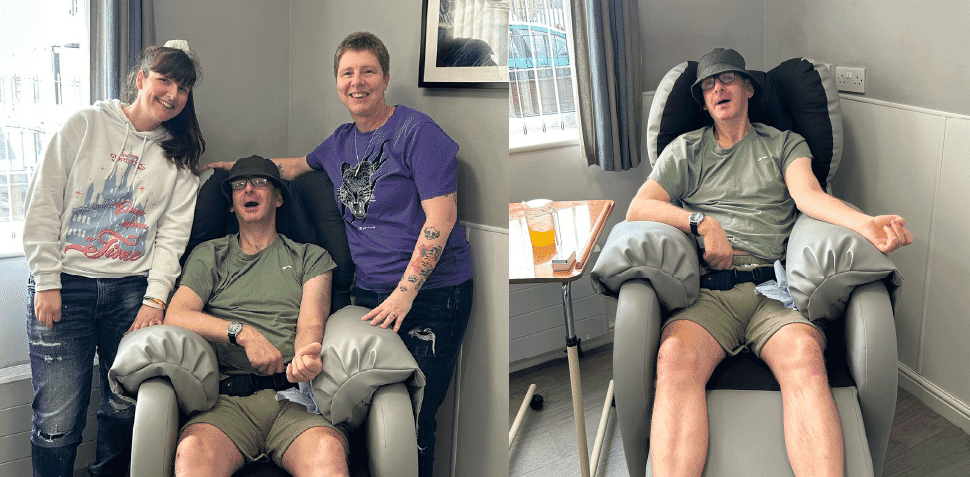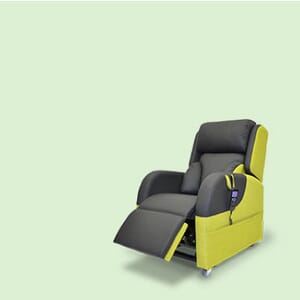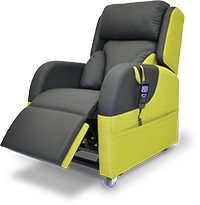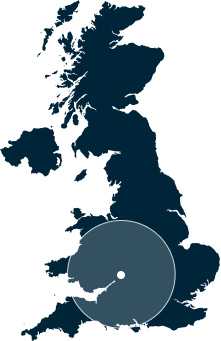This is the story of Tony and Joeanne (Joe), a brother and sister who along with their whole family have been deeply affected by Huntington’s Disease (HD). We hope that this wonderful family’s experience and advice can inspire and guide others that are affected by HD, as well as raise awareness generally and maybe prove useful to carers and professionals when seeking funding.
Huntington’s disease (HD) is an inherited, genetic disorder that causes nerve cells in parts of the brain to gradually break down and die. It affects areas of the brain that control voluntary movement and memory. People living with HD develop powerful uncontrollable movements and abnormal body postures, changes in thinking, behaviour, and personality.
Tony, Joe and The Gates Family
We met Joe and Tony recently when installing a new chair for Tony, Cura’s HD Ready, and Joe very kindly took the time to enlightened us about the realities and impact of HD. (I’ll say more about the chair later, but for now this is all about Joe, Tony and the family.)
The impact of HD over generations
Joe explained that HD has had a terrible effect on her family.
Her earliest memory of HD is of her grandad being locked in a mental health facility, as at that time due to his symptoms he was considered ‘mad’. He stayed there for the remainder of his life.
Although HD is well understood now, there remains no cure, and the disease has hit Joe and Tony’s mum, both aunties, an uncle and a cousin, eventually leading to their deaths and ‘wrecking their family’.
The 50:50 risk and early signs
Anyone who is genetically at risk of HD will probably have seen its impact on a family member at first hand, and will know that it’s a 50:50 chance that they will develop the disease. Joe wanted to know if she would develop HD and was tested, thankfully finding out that she does not carry the gene, so will not. Tony like many did not want to know, and was not tested. But unfortunately Tony, an athlete who played football and speed skated competitively, started to show the early signs of HD in his twenties. He experienced a loss of coordination, reaching for objects and missing them, a trembling hand when trying to drink, and falls. It’s no surprise that Tony became depressed and didn’t want to talk about what was happening to him apart from with his close family group, who’s love and support was so very important at that distressing time.
Coming to terms and learning to cope – the importance of a loving care network
Remarkably, over the years, with the love and support of his family as well as his own strength of character, Tony has learnt to live with and even accept his HD. Joe with her wife and daughter have of course been a massive part of that. They visit often from North Wales to Tony’s care home in Birmingham where he receives excellent care from Sam’s team at Bridgewood Mews. Joe makes sure that Tony is supplied with the lego that he loves, can enjoy his passion for Marvel, and is able to play on his PlayStation, and her wife, a care assistant by profession, helps out with his physical needs as well as building the lego!
Getting the best for her brother – Quality of Life!
Joe has become Tony’s voice in the world.
She put’s in an incredible amount of effort to discover the resources and support options for Tony, to ensure that he benefits from the best of what’s possible. Her dedication and perseverance have been crucial in improving Tony’s quality of life and managing his HD.
Getting out and about
As well as doing so much to care for Tony’s individual joys, what Joe has achieved for her brother’s overall wellbeing is a great example of what can be achieved.
For people with HD, it makes the world of difference to be able to get out and about, and to enjoy the outside world. However Joe found that Tony was missing out, confined to the home because the minibus was unable to accommodate him. She campaigned passionately for the transport to be upgraded so that Tony could be included, eventually achieving that goal. It took emails and telephone calls over time and Joe’s advice is to put yourself in the place of the person you love and to draw energy from that, dig in to get what you know is needed! Tony can now enjoy all of the trips and social activities that make such a difference to his sense of freedom, happiness and wellbeing.
Specialist Seating – from injury and insecurity to comfort and safety
Tony sits for long periods every day, so his chair is fundamentally central to his quality of life. Joe’s challenge was two-fold:
- Tony was suffering serious injury
Despite using a chair that claimed to be designed for HD, Tony was not sitting comfortably, and he was suffering painful injuries due to his powerful involuntary movements. He would push himself backwards with force, hitting his head hard against the frame of his chair. His strong side to side movements would tip him out of his chair, leaving him helpless on the floor; chairs would even break. Tony needed to wear protective headgear, he could not sit comfortably and could not enjoy the things in life that give him pleasure.
- And so to find the right chair for her brother
Joe knew what she wanted for Tony and took to Google to find it! She was looking for a chair that could achieve all of the following, potentially contradictory benefits:
-
- – very deep soft padding at the back and at head height to protect Tony’s head from violent involuntary backward thrusts
-
- – very deep soft padding at each side to cocoon Tony securely and immerse him in comfort
-
- – strong enough to withstand powerful involuntary movement without damage or breakage
-
- – stable enough to support Tony safely during powerful side to side movement, without tipping or capsizing
- – all padding should combine softness for comfort with the strength to withstand Tony’s involuntary movements
Joe’s investigations led her to call our careline at Premiere Healthcare and we arranged to visit Tony to make an independent assessment of his seating needs.
Our expert assessor immediately recognised an ideal opportunity to introduce the new HD Ready chair from Cura so we took one along for Tony to try out. It worked perfectly and a couple of weeks later it was a delight to deliver his chair. The chair is incredibly strong and so padded that it looked like a grown man couldn’t possibly even fit. But all that padding provides soft but resilient bumpers that stay in place – creating a chair to be immersed in rather than to sit on.
Adjustable depth, width and height meant that we could tailor the chair exactly for Tony. And then the electronically reclining back and adjustable foot rest offer the flexibility for different positions throughout the day, increasing comfort and shifting body weight to protect from pressure injury.
The early feedback from Tony and Joe about the chair – ‘he loves it!’ – and we’re so very happy to have been able to help!

Joe’s advice
Joe is Tony’s voice in the world, checking up, speaking, up and looking into ways to make life better for her brother. Her advice is to put yourself in the position of the person with HD, think about their needs in terms of comfort and quality of life, ask questions, search the internet, and seek all the help you can get, including from the Huntington’s Disease Association:
Huntington’s Disease Association
The NHS pages dedicated to Huntington’s Disease
Try the Cura HD Ready for yourself – we’d love to hear from you
If you care for someone with Huntington’s Disease we would love to bring you a Cura HD Ready to try out for yourselves. We’re very confident that you’ll fall in love!
Please get in touch for a free, no obligation, consultation. We are always here to talk over how we can help, for Specialist Seating assessments, and for healthcare professionals our training and product update session.









